Vanmarcke: I’m ready to take another step
LottoNL-Jumbo rider talks Boonen, Cancellara and the Classics
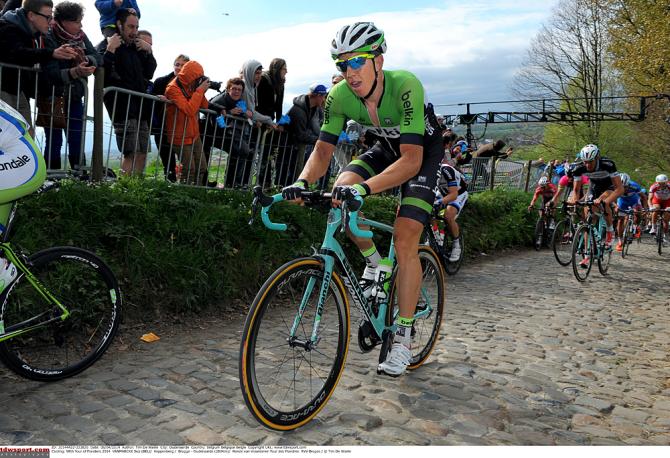
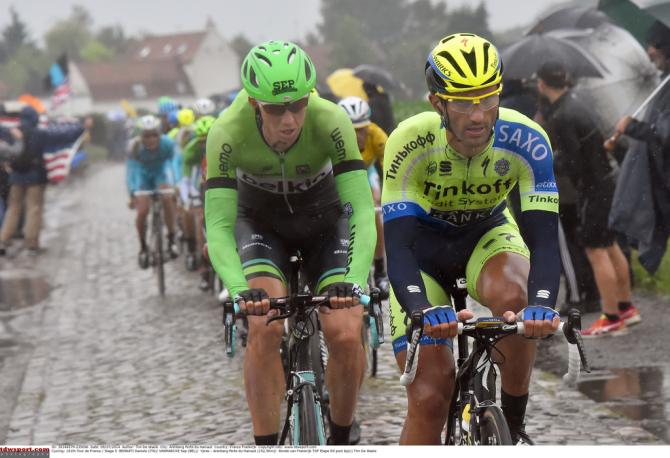
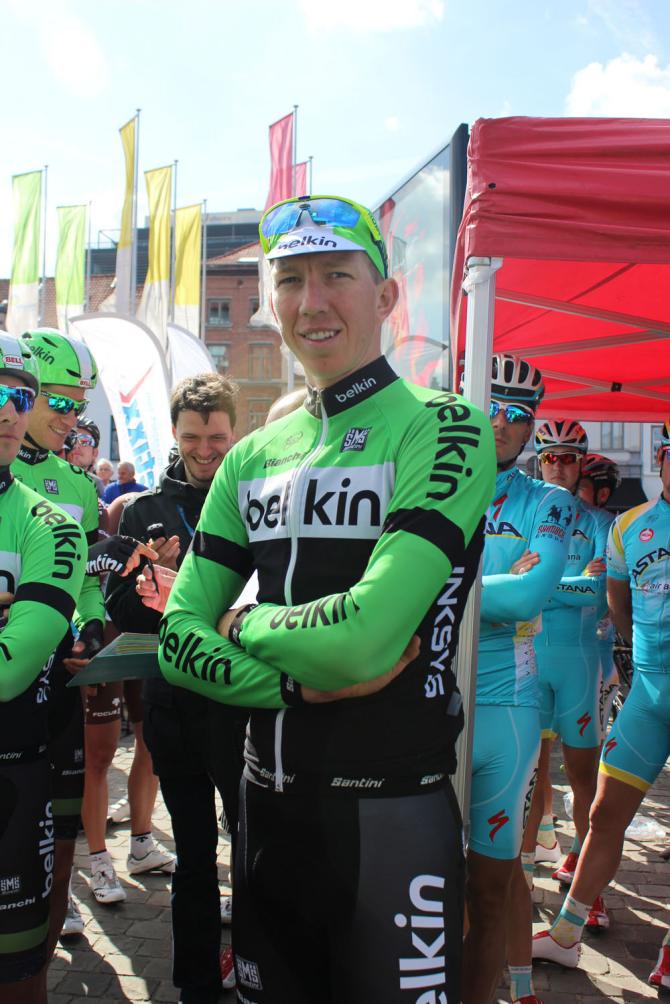
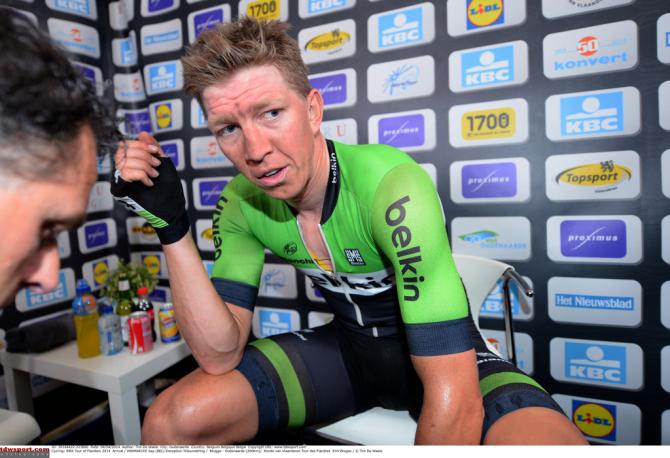
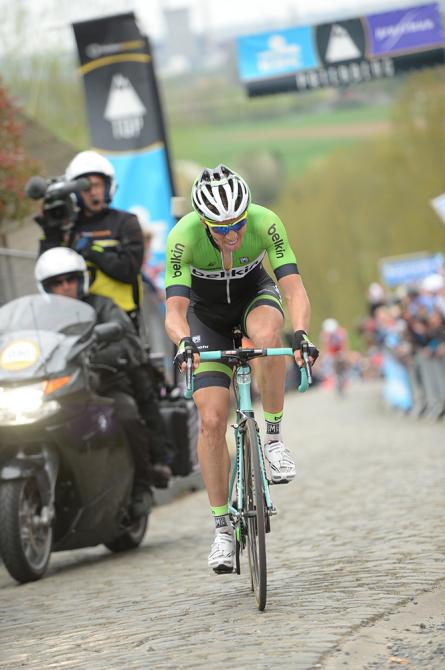
Over the years, it’s become something of an informal tradition. On the final Saturday of February, Tom Boonen has almost invariably heralded the end of the long, Belgian winter by lining out the peloton on the climb of the Taaienberg during Omloop Het Nieuwsblad. Regardless of the result – and it’s the one big cobbled race he has never won, after all – Boonen’s cameo sends his legions of fans home content, satisfied that their man will be fit for purpose by the Tour of Flanders five weeks later.
This past season, however, there was an alteration to the script. After injury and illness ruined his 2013 campaign, Boonen was expected to lay down a marker on his favourite test site, but instead it was Sep Vanmarcke who commandeered the smooth gutter on the right-hand side of the road and, hands perched on the tops of his handlebars, steadily stretched the bunch to breaking point on the Taaienberg. As statements of intent go, it was an impressive one, and it proved a precursor of what was to follow over the remainder of the cobbled campaign.
The Vanmarcke surge was a staple on cobbled hills all spring, and his sequence of results – 4th at Omloop, 3rd at Kuurne-Brussel-Kuurne, 5th at E3 Harelbeke, 4th at Gent-Wevelgem, 3rd at De Ronde and 4th at Paris-Roubaix – was the most consistent body of work put together by any Classics contender last season. Along with Fabian Cancellara, he appeared to be the strongest rider of the cobbled races, even if it takes a little prompting for him to admit as much. A Flandrian never boasts of his own exploits, after all.
“I don’t think about it a lot but, yeah, if I think back, I was really strong in those races – like Cancellara, of course,” Vanmarcke tells Cyclingnews. “And if you count those races together, then we probably were the strongest two in the field, although if you look separately at the Tour of Flanders, then Van Avermaet was also really strong.”
Vanmarcke is aware, of course, that impressive performances and near misses are all well and good, but for the demanding Flemish public, a rider’s worth is measured in victories rather than in placings, and in achievement rather than in potential. He was generally better than Boonen, for instance, but the Omega Pharma-QuickStep man snaffled a Kuurne-Brussel-Kuurne win and already has seven Monuments inscribed on his palmares whereas Vanmarcke has none.
“Straight after the Classics season I wasn’t overly happy because I really wanted to win a big race and it didn’t happen,” he says. “But now after, what, half a year, I have to be satisfied because I was strong in every race, not just a few races. In every Classic I did, I was up there and I’m still only 25. Each year I’m getting better and better and now I’m looking forward to next season. I hope to make another step.”
Vanmarcke’s strength in 2014 was such that he had few willing collaborators when he went away in the finale of Paris-Roubaix, though he has since reconciled to the fact that the headwind meant that the move was never likely to survive to the end. At the Tour of Flanders, meanwhile, he confesses to an error in the finishing sprint. “I waited too long: I wouldn’t say I was going to win but I lost my chances there because of my own mistake.”
Get The Leadout Newsletter
The latest race content, interviews, features, reviews and expert buying guides, direct to your inbox!
Yet all told, an analysis of Vanmarcke’s Classics campaign doesn’t throw up any glaring errors of judgement. There were some faint murmurs that he had shown his hand too early and often at the Tour of Flanders but his efforts did effectively eliminate Boonen and Peter Sagan from contention. Certainly, he doesn’t envisage any radical overhaul of preparation or mind-set for 2015.
“I think mostly I just need to have patience and just get a little bit stronger,” Vanmarcke says. “As for tactics, you can always change something. Maybe as I get older, I’ll get more relaxed and I’ll just take the right decisions more often.”
One obvious change, of course, is that Vanmarcke will ride the Classics as the re-branded LottoNL-Jumbo team's sole leader following Lars Boom’s transfer from Belkin to Astana, though in truth, the Dutchman’s injury-enforced absence for a chunk of last spring means that it is not exactly uncharted terrain.
“I think this year it was the first time that I was a [sole] leader and my teammates said that it was the first time that they had a real leader who they knew would be fighting there at the finish for the win,” Vanmarcke says. “So they’ve got a lot of confidence and experience now and it’s the same for me. If they have confidence in me, they will work harder for me and then I can have more confidence in myself too.”
Boonen and Cancellara
For the past decade, trying to win the Tour of Flanders or Paris-Roubaix has meant having to find a way around Boonen and Cancellara, who have imposed austerity on a litany of pretenders by dictating terms and conditions on the first two Sundays in April. 17 of the 20 editions of Flanders and Roubaix in the past ten years have been won by Cancellara, Boonen or their teammates. The bank, it seems, always wins.
It’s a daunting statistic but Vanmarcke is taking solace from the evidence of the past couple of springs. Between 2008 and 2012, the Old Firm seemed to operate on a different plain, but as the go deeper into their 30s their stock is, if not quite falling, has at the very least plateaued.
“I don’t know, but I don’t think Tom will be stronger than in the past. For Tom and for Cancellara, the maximum they can do is to keep the level that they have,” Vanmarcke says, although he adds carefully: “I can’t speak for Tom because I don’t see him in training, I only see him in races. It’s difficult.”
One thing Vanmarcke can certainly agree on, though, is that there is a wider range of genuine contenders at the cobbled classics now that Boonen and Cancellara have entered the final phase of their careers and the younger generation has found its feet. “I’m sure the races are more open now. Like I said, they [Boonen and Cancellara] are definitely not getting stronger and people like me and, for example, [John] Degenkolb and [Greg] Van Avermaet, are getting closer to their best level and still getting better. The gaps were getting closer last year and it will get even closer this year I think.”
Vanmarcke is circumspect about the material difference Peter Sagan’s transfer to Tinkoff-Saxo will make to his impact – “I don’t know if he’ll get stronger, I expect more of the same from him,” he says – but points to Alexander Kristoff (Katusha) as a particularly dangerous coming force on the pavé. “He was only a little bit behind the strongest guys on the cobbles this year so one day he will be there,” he warns. “For me it’s a big problem to beat him the sprint, and it’s the same with Degenkolb and a few more guys who are just faster than me. I need to get rid of them…”
Indeed, for all Vanmarcke’s rapier sharpness on the hellingen, he is normally a rather blunt finisher, although he points out that on his day, he can pull a sprint out of the bag, most famously when he upset Boonen himself at Het Nieuwsblad in 2012. “I don’t think I have to be alone to win but I just need to have a super day, like when I beat Boonen. To win a sprint, I need a day like that. That’s the problem but I don’t think it’s impossible.”
Benidorm and Belgium
Vanmarcke is speaking to Cyclingnews over the phone from Benidorm, where he is staying for an extra week of warm weather training following LottoNL-Jumbo’s first training camp of the winter, and he will return to the Costa Blanca again for much of January. “It’s good for me because I don’t have the best Google maps in my head so if I know the roads here a little bit,” he jokes.
Of course, he has no need of Google maps when it comes to the finale of the Tour of Flanders. Vanmarcke lives near Waregem, barely ten miles from the finish in Oudenaarde, and a typical day’s training at home involves part of the De Ronde route. Indeed, he famously spent Christmas morning two years reconnoitring the rejigged finale over the Kwaremont and Paterberg.
“When I go back next week I will do it a few times again. It’s close to my home so it’s a perfect training route. Time goes fast when you ride on it, it’s interesting and every time you do it you get to know the course a little bit better,” he says. “Nobody can know the road as well as I do. I know every rock and every hole in the ground because it’s just my training location.”
Just as Vanmarcke knows his terrain, he also knows the kind of classics build-up that works for him. The demands of the race organisers might yet see him line up at the Dubai Tour, but typically he eschews the received wisdom that racing in the Middle East is now a necessity in the preamble to the Classics. He pays little heed, too, to the current trend for beginning the season as early as possible in the Southern hemisphere. For the past few years, Vanmarcke hasn’t ventured any further south than the Algarve in late February for his first full stage race of the season.
“I don’t need a lot of races. One small stage race is enough for me because I can suffer enough in training if I want and that’s how I prepare. I don’t need those ten or fifteen race days,” he explains.
Worlds ambition
At this point in the winter, be it amid the olive groves of Spain or the hillocks of Flemish Ardennes, Vanmarcke’s horizon stretches only as far as the second Sunday in April, though he will not be without ambition in the latter part of the campaign, not least because his favoured terrain features on the Tour de France route for the second successive year. “I think every time I have a chance to have a stage on the Tour de France that goes over cobbles, I have to try to win it,” he says of stage 5 to Amiens.
His beloved cobbles feature, too, on the course of the World Championships road race in Richmond, with the climb of Libby Hill situated just three kilometres from the finish, and Vanmarcke has already sketched out a programme that would see him return to Canada (he won a stage of the Tour of Alberta this year) for much of the build-up to September 27 in Virginia.
Leadership of the Belgian team at the Worlds has essentially been the preserve of Boonen and Philippe Gilbert for at least as long as Vanmarcke has been a professional, but in Ponferrada this year, there was the first firm sense of a generational change, as coach José De Cauwer handed the reins to Greg Van Avermaet.
Vanmarcke hopes the responsibility will be his in Richmond. Like Van Avermaet, he is softly spoken and seemingly content to allow the glare of local media spotlight fall on Boonen or Gilbert, but that reserve should not be mistaken for a lack of ambition or belief. In his own quiet way, Vanmarcke is ready for his close-up.
“I think it’s almost time that Van Avermaet and I can change positions with Boonen and maybe Gilbert,” Vanmarcke says. “We’re getting better. We’re up there in every big race, in the finals, fighting for the win. So I think for me as well, I’m ready to take another step.”

Barry Ryan was Head of Features at Cyclingnews. He has covered professional cycling since 2010, reporting from the Tour de France, Giro d’Italia and events from Argentina to Japan. His writing has appeared in The Independent, Procycling and Cycling Plus. He is the author of The Ascent: Sean Kelly, Stephen Roche and the Rise of Irish Cycling’s Golden Generation, published by Gill Books.